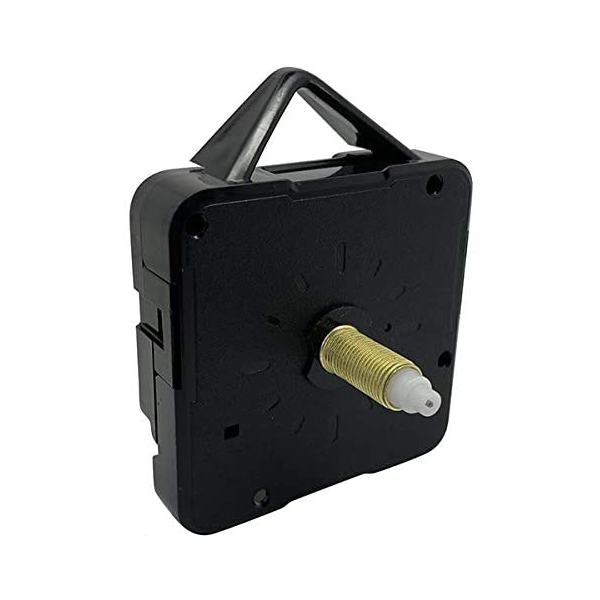

- SERVO MOTOR ARDUINO TICKING MOVEMENTS HOW TO
- SERVO MOTOR ARDUINO TICKING MOVEMENTS GENERATOR
- SERVO MOTOR ARDUINO TICKING MOVEMENTS MANUAL
- SERVO MOTOR ARDUINO TICKING MOVEMENTS SKIN
- SERVO MOTOR ARDUINO TICKING MOVEMENTS CODE
While our tail relies on either the Arduino controlled accelerometer or manual joystick control to operate the servo motors, you could develop your own control methods that better suit your needs, such as programming in your own specified movement patterns and using a controller to cycle between them. Ideally what you want is for your tail's center of gravity to lie as close to the fastening straps around your waist so that it doesn't shift your sense of balance. So make sure you keep your energy requirements and plan your weight distribution well ahead of time. Do keep in mind however that when you add weight, you may need to add stronger servos as well as additional or more powerful batteries to power them. you could even 3d print segmented sections to cover your tail giving it a stronger and more defined form while still allowing it to move similar to how a reptile's scales behave.
SERVO MOTOR ARDUINO TICKING MOVEMENTS SKIN
You could also create covers for your tail, either made out of printed cloth or textured surfaces to simulate different types of skin or fur. You could change the length as well as the number of joints in the tail, which would give you greater control and be able to perform a more natural and far more complicated tail movement. While the tail we've created could probably be a great part of a good 'Xenomorph' costume with a bit of black paint, there are naturally a lot of different ideas you could implement to change the basic design we came up with and adapt it to your needs.
SERVO MOTOR ARDUINO TICKING MOVEMENTS CODE
You can check out a detailed view of all the electronic parts you will need as well as getting all the code you need to get it working by clicking this link. Our build also features a remote control system attached to a handheld joystick to allow you to directly manipulate the tail's motion when you want to control it manually. The tail's movement is primarily driven by a trio of servo motors attached to the tail and controlled by a gyro stabilized accelerometer to determine the tail's movement when you walk around or move from side to side. You'll also need access to at least a basic 3d printer to get all the parts you will need in order to put this project together. This project is definitely meant for advanced users since the construction, assembly, and coding required to get the tail working as desired is moderately complex.

With this new wearable Arduino gadget, which is also one of the first we've put together here, your new Velociraptor costume will never be the same again. With the help of an Arduino accelerometer module, we'll be creating a working animatronic tail that can help bring your fantasy outfits to life like never before. Using a standard 0.1 uF capacitor, we would need values of 10K for 1 ms width and 24K for 2 ms width.Today's project is one that will certainly be of interest to cosplayers or anyone who has ever taken their Halloween outfits extremely seriously. The required values are determined from the timing equations for the 555 timer. The scheme is to switch in three different value resistors to select the three different pulse width values required. The circuit described here will be implemented with a 555 timer IC, since it is easiest to assemble and does not require any programming knowledge.
SERVO MOTOR ARDUINO TICKING MOVEMENTS HOW TO
The circuit is shown below how to use a servo motor to operate a door lock can be implemented as a wireless remote control using any suitable RF module such as the RXD4140-434 module in place of the pushbutton switches. Any of these circuits can be combined with the RF remote control modules listed on To learn more about how to program a servo motor, you can read this article from the Arduino website.
SERVO MOTOR ARDUINO TICKING MOVEMENTS GENERATOR
The required circuit is a simple pulse generator based on a 555 timer, Arduino, or PIC microcontroller. You can use a servo motor to operate a door lock or a latch enables you to remotely lock and unlock a door or gate. A 1 ms pulse width will position the motor to the extreme left (0°), a 2 ms pulse width will position the motor to the extreme right (180°), and a 1.5 ms pulse width will position the motor in between these two extremes (90°). When you are ready, you can further expand the system to operate wirelessly using a basic remote control.Ī servo motor operates on a system based on sending three different pulse widths to the unit to produce movement that ranges from 0 to 90 to 180 degrees. The good news is that you can use a simple circuit with a relatively inexpensive servo motor to perform this function.

In today’s technologically advanced society, the desire to remotely operate doors is becoming increasingly widespread.

Using a servo motor to operate a door Lock is a popular project for many electronic hobbyists.


 0 kommentar(er)
0 kommentar(er)
